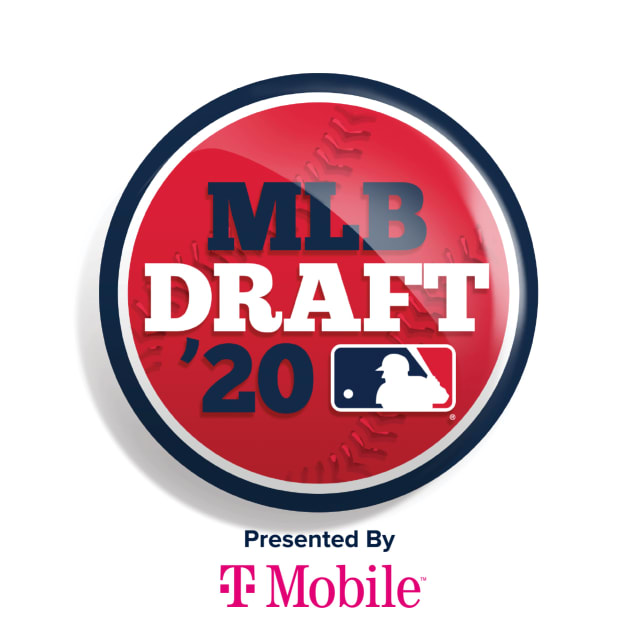Tool Twins: Comps for the top Draft prospects
While it’s true that no two players are exactly alike, some are more similar than others.
Each year when the Draft comes around, comparisons are made to current professional players. Rather than just throw out names with similar body types or those of players who might remind you of a current big leaguer or prospect, we dug a bit further this year.
We looked at past Draft prospects, the grades we gave them for their tools when they were drafted, and compared them to this year’s class. Below is a look at the Top 10 on our current Draft Top 200 list and who they are closest to in terms of tool packages, followed by a handful of interesting “identical twins” among the top 2020 Draft prospects.
Spencer Torkelson, 1B, Arizona State (No. 1): For the second year in a row, the top of the Draft features a right-handed-hitting first baseman with advanced hitting skills and a lot of power. Torkelson is a bit more athletic and a better runner than Andrew Vaughn (No. 3 overall, White Sox, 2019), but they have very similar offensive profiles.
Austin Martin, OF/3B, Vanderbilt (No. 2): Like Martin, Ian Happ (No. 9 overall, Cubs, 2015) was a pure hitter with some deceptive power and solid speed. There were questions about the defensive home for both players, though Happ had a better arm and Martin has a better chance to stick in the infield.
Asa Lacy, LHP, Texas A&M (No. 3): Lacy and MacKenzie Gore (No. 3 overall, Padres, 2017) are both southpaws who project as future aces with deep four-pitch repertoires in which each offering grades as plus or better at their best. Gore was a bit more polished even though he was a high schooler.
Emerson Hancock, RHP, Georgia (No. 4): Both Hancock and Walker Buehler (No. 24 overall, Dodgers, 2015) combined quality stuff and advanced pitchability as Southeastern Conference stars. Hancock should go in the first half-dozen picks next week -- Buehler would have done the same if not for an elbow injury that led to Tommy John surgery, and his stuff jumped to a new level after he returned from the grueling rehab process.
Nick Gonzales, SS/2B, New Mexico State (No. 5): Our second draftee to be compared to Happ, Gonzales exhibits the pure hittability and solid speed that Happ displayed back in 2015. Happ appeared to have a touch more power than Gonzales does, but there’s much more faith in the New Mexico State product’s ability to stay at second base.
Garrett Mitchell, OF, UCLA (No. 6): Mitchell has the best all-around set of tools in this Draft class -- he’s the first prospect we’ve ever given a combination of 60 hit, 50 power and 70 speed to grades-wise -- so he’s a bit hard to pair up. But Lewis, the No. 1 pick in the 2017 Draft, comes close with his above-average hit tool and close to top-of-the-scale speed.
Zac Veen, OF, Spruce Creek HS (Port Orange, Fla.) (No. 7): Veen has drawn many high-profile comps, including to Cody Bellinger and Christian Yelich. Area scouts like comparing him to Kyle Tucker (No. 5 overall, Astros, 2015) and it’s easy to see why. They are nearly identical twins tools-wise, with Veen getting a slight edge defensively.
Reid Detmers, LHP, Louisville (No. 8): Detmers and Brendan McKay (No. 4 overall, Rays, 2017) dominated at Louisville with advanced pitchability of solid, rather than overpowering, stuff. Both carved up hitters by commanding low-90s fastballs and buckling knees with quality curveballs.
Max Meyer, RHP, Minnesota (No. 9): Both Meyer and Dillon Tate (No. 4 overall, Rangers, 2015) were small yet athletic right-handers who began their college careers as relievers and starred for Team USA. In their Draft years, both operated with mid-90s fastballs as starters and possessed the best sliders in their respective classes.
Heston Kjerstad, OF, Arkansas (No. 10): Michael Conforto (No. 10 overall, Mets, 2014) works as a comp for Kjerstad because both are left-handed sluggers who led Team USA in homers the summer before their Draft year and fit best on an outfield corner. Kjerstad has a little more athleticism and should get picked right around where Conforto did.
NOTABLE 'IDENTICAL TWINS'
Robert Hassell, OF, Independence HS (Thompson's Station, Tenn.) (No. 16): Hassell and Ian Happ (No. 9 overall, Cubs, 2015) were both advanced bats and hit-over-power guys with a chance to stick in center field while possessing solid arm strength.
Cade Cavalli, RHP, Oklahoma (No. 22): Just like the underrated Corbin Martin (second round, Astros, 2017), Cavalli can make hitters look bad with a mid-90s fastball or a power curveball, and he features a promising slider.
Chris McMahon, RHP, Miami (No. 29): Mike Soroka (No. 28 overall, Braves, 2015) was a high schooler out of Canada with a good feel for pitching, though there’s always a bit of dreaming involved in future grades for prepsters. It turned out that Soroka out-developed our Draft grades for him, while McMahon as a college performer is more of a bet to meet his.
Justin Foscue, 2B, Mississippi State (No. 32): Though Will Wilson (No. 15 overall, Angels, 2019) was a shortstop, he’s destined for second base and a perfect match for Foscue’s 20-homer potential, ability to barrel balls, below-average speed and average arm strength.
Blaze Jordan, 1B, DeSoto Central HS (Southaven, Miss.) (No. 42): Both Jordan and Rece Hinds (second round, Reds, 2019) offered the most prodigious raw power in their high school classes, but came with swing-and-miss issues and concerns as to where they’d wind up defensively.
